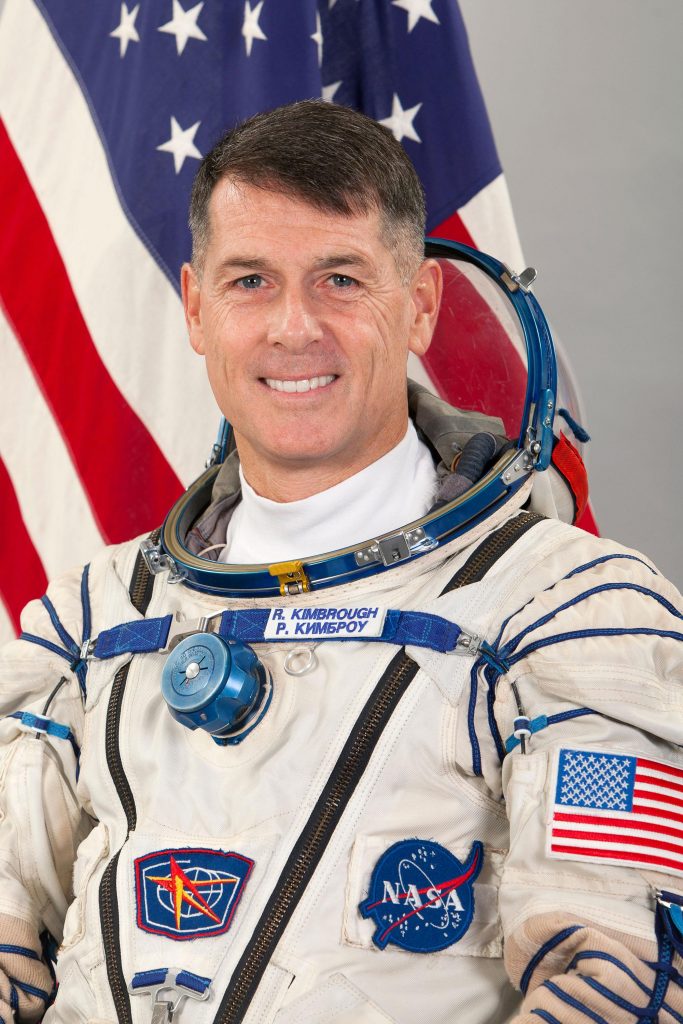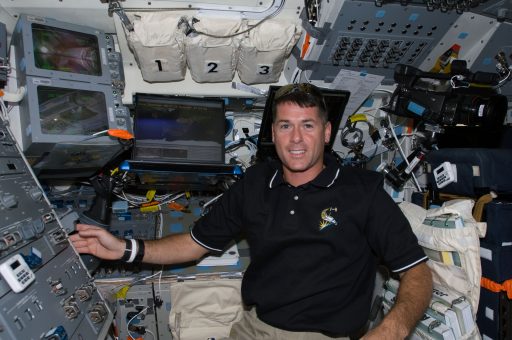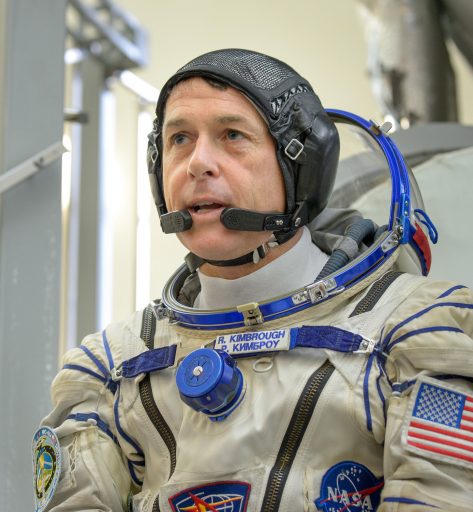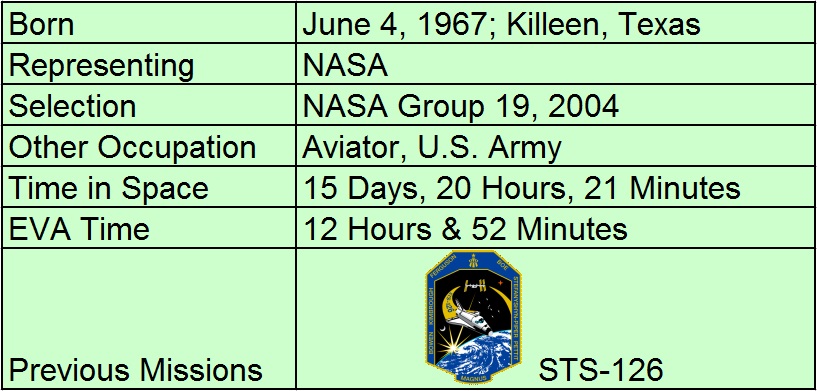Shane Kimbrough

Robert Shane Kimbrough, born June 4, 1967 in Killeen, Texas, is a retired Colonel in the U.S. Army and NASA Astronaut with one prior flight on the Space Shuttle. He will complete his first long-duration spaceflight in 2016/17 as part of ISS Expedition 49/50.
Kimbrough graduated from Lovett School in Atlanta, Georgia before attending the U.S. Military Academy in West Point, earning a Bachelor’s degree in Aerospace Engineering in 1989. He then served as a pilot on the Apache helicopter in Operation Desert Storm in 1991.
Back in the U.S., Kimbrough attended Georgia Tech, graduating in 1998 with a master’s degree in Operations Research. Afterwards, he began working in NASA training operations with special focus on landing procedures before being selected as Astronaut Candidate himself.
Selected by NASA in 2003, Kimbrough entered two years of training and evaluations. He was qualified as Mission Specialist in February 2006 and began working within the Flight Safety Office at Johnson Space Center.
His first flight assignment was awarded in 2007 when he was appointed to the crew of Shuttle Mission STS-126, marking the start of a year of mission-specific training which had a primary focus on spacewalk operations for him.
Space Shuttle Endeavour blasted off from the Kennedy Space Center on November 15, 2008 and arrived at the International Space Station two days later. In its Payload Bay, the Shuttle carried the Multipurpose Logistics Module Leonardo that was temporarily attached to ISS for the transfer for several tons of internal cargo.
Four spacewalks were performed on STS-126, rotating between three different crew members. Shane Kimbrough participated in two of the EVAs for a total of 12 hours and 52 hours of spacewalking time, dedicated to various external reconfiguration tasks on the Space Station.

The first EVA had the crew relocate the Crew Equipment and Translation Aid (CETA) carts from the starboard to the port side of the Mobile Transporter. They lubricated the Latching End Effector of the Robotic Arm and also applied lubrication to the Station’s Solar Alpha Rotary Joint on the starboard side.
The second EVA performed by Kimbrough included more SARJ maintenance including lubrication on the port SARJ. The spacewalkers also re-installed insulation on the Japanese Kibo module, outfitted the Japanese robotic arm, installed handrails and a GPS antenna on Kibo and completed a photo survey.
Endeavour landed at Edwards Air Force Base after a mission of 15 days and 20.5 hours, dropping off 20 metric tons of cargo at the International Space Station.
After his flight on the Space Shuttle, Kimbrough worked in the Astronaut Office and entered general ISS training operations for a future long-duration mission to the orbiting complex. In 2010, it was reported that Kimbrough would be part of ISS Expedition 34/35, but the assignment was not confirmed by NASA as Thomas Marshburn took the USOS slot on that mission.

In October 2014, it was reported that Kimbrough had been assigned to the crew of Expedition 49/50. He reported to the Gagarin Cosmonaut Training Center in December 2014 to begin systems familiarization on the Soyuz TMA and MS spacecraft, the structure and systems of the Russian segment of ISS, and emergency landing procedures.
The trio entered training operations in January 2015 to prepare for flight specific tasks and receive in-depth systems training for both Soyuz and ISS. They completed two days of survival training in a forest near Moscow to prepare for the event of a winter landing in a remote area. Training for a water landing was conducted at the Noginsk Rescue Center in July 2015 over the course of three days, allowing the crew to be familiarized with heat-protective and diving suits and other survival gear on board the Soyuz.
Embarking on his first long-duration mission, Kimbrough will serve as Flight Engineer on the Soyuz MS-02 spacecraft and ISS Expedition 49 before transitioning to the commander role for Expedition 50.

